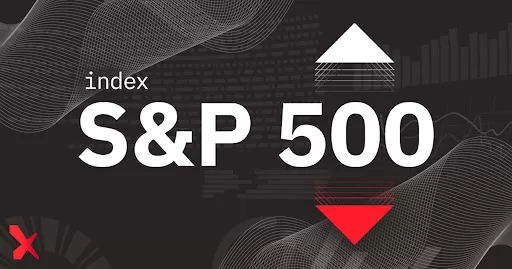Trading Signals 05/02 – 09/02
Understanding the S&P 500: An Overview

Stock market legend and investor Warren Buffett once remarked that a low-cost S&P 500 index fund is the best investment most people can make. For many years, the S&P 500 has offered its investors an average annual return of 9% to 10%. But what exactly is the S&P 500? Let’s delve into it.
What is the S&P 500?
The S&P 500 is a stock market index, often seen as a litmus test of the American economy. The acronym comes from the company that publishes the index, Standard & Poor’s, now a renowned registered trademark of S&P Dow Jones Indexes.
This stock index comprises shares from 500 of the largest companies available on the United States stock markets.
Each company doesn’t simply represent 1/500th of the index – larger companies make up a more significant portion of the index’s value and have a more substantial impact on its performance.
Thus, companies like Apple and Amazon have a more significant influence on the S&P 500 index than relatively smaller ones like Macy’s or Harley-Davidson.
The index is made up of the largest companies, but they significantly vary in capitalization. Some may have a market capitalization of $1 trillion, while others are more than 200 times smaller, ranging from $6 billion to $7 billion.
The value of the S&P 500 fluctuates continuously throughout the trading day. Why? Because the market performance of the companies within the index is always changing, and the index follows suit. The changes in the index will be as substantial as the ‘weight’ of the company within it.
Which Companies are in the Index?
The S&P 500 consists of 505 stocks from 500 different companies. There are precisely 505 stocks, not 500, because some companies issue several classes of shares. For instance, Alphabet participates in the index with two classes of its securities: Alphabet Class C and Alphabet Class A.
The performance and efficiency of the index largely depend on its largest stocks.
Here are the top 10 largest components of the S&P 500 as of December 2023:
- Apple
- Microsoft Corporation
- Amazon
- Tesla
- Alphabet Inc.
- Meta (Facebook)
- Google Alphabet
- NVIDIA
- Berkshire Hathaway
- JPMorgan Chase
If you ask any professional investor to name the major U.S. stock indexes, they’ll likely mention several but will invariably start with the S&P 500. This is because the S&P 500, not other indexes, is traditionally considered the barometer of the overall effectiveness of the stock market and an indicator of how large corporations in the U.S. are performing.
Why the S&P 500 Tops as a Market Indicator?
Imagine a vast basket of securities containing the largest and most successful companies, a basket so large that no investor in the world could afford to buy it in its entirety. However, almost everyone can invest in a small part of it, thereby earning from the market success of all these companies at once. That’s how the index works. Moreover, its 500 components constitute approximately 80% of the total market capitalization of the U.S. stock market.
S&P 500 vs. Dow Jones Industrial Average
A common question is why the S&P 500 is considered a better indicator of the stock market than the Dow Jones Industrial Average. After all, it’s the Dow Jones index value that you usually see on TV in all the stock market news, so why not that one?
The Dow has two significant drawbacks. Firstly, it includes only 30 companies, ignoring some of the largest market players. For example, Amazon, Alphabet, and Berkshire Hathaway are absent from the Dow Jones index.
Secondly, the Dow Jones Industrial Average is a price-weighted index. This means that companies with more expensive shares have a greater influence on the index than those with lower-priced shares. In other words, it’s the price of the company’s papers, not its capitalization, that affects its place in the index.
For instance, Goldman Sachs, with a share price currently at $386, has more than twice the weight in the Dow than Walmart, despite being only a quarter of the size in terms of market capitalization.
This means that the S&P 500 index covers far more stocks than the Dow Jones and assesses their place in the overall effectiveness of the stock market more logically.
Why This is Convenient for Beginners?
So, let’s imagine you’re a newcomer to the stock market and have never traded professionally. Naturally, you’ll be looking for the safest and most profitable investment tool.
To achieve high returns without losing money, you need to invest the most valuable assets – time, knowledge, and the desire to properly research the stock market and maintain your investment portfolio in working order.
For many investors, this becomes a full-time job. Certainly, in such a case, you can achieve higher investment returns compared to the S&P 500 in the long term.
However, not everyone has that much time, knowledge, and discipline. If you’re not aiming to professionally delve into the intricacies of economics and the factors affecting the value of specific companies’ securities, and you’re not ready to spend days and hours monitoring the stock markets, it’s simpler and safer for you to use the S&P 500 index fund.
Investing in the S&P 500 index is a way to gain insight into the profitability of American business without diving into the details of each company’s operations. Over time, the S&P 500 can provide a high return on your portfolio with minimal effort on your part.
Oil: A Review of Early 2024
China’s Economy: Early 2024
Simple Strategy for Beginner Traders

